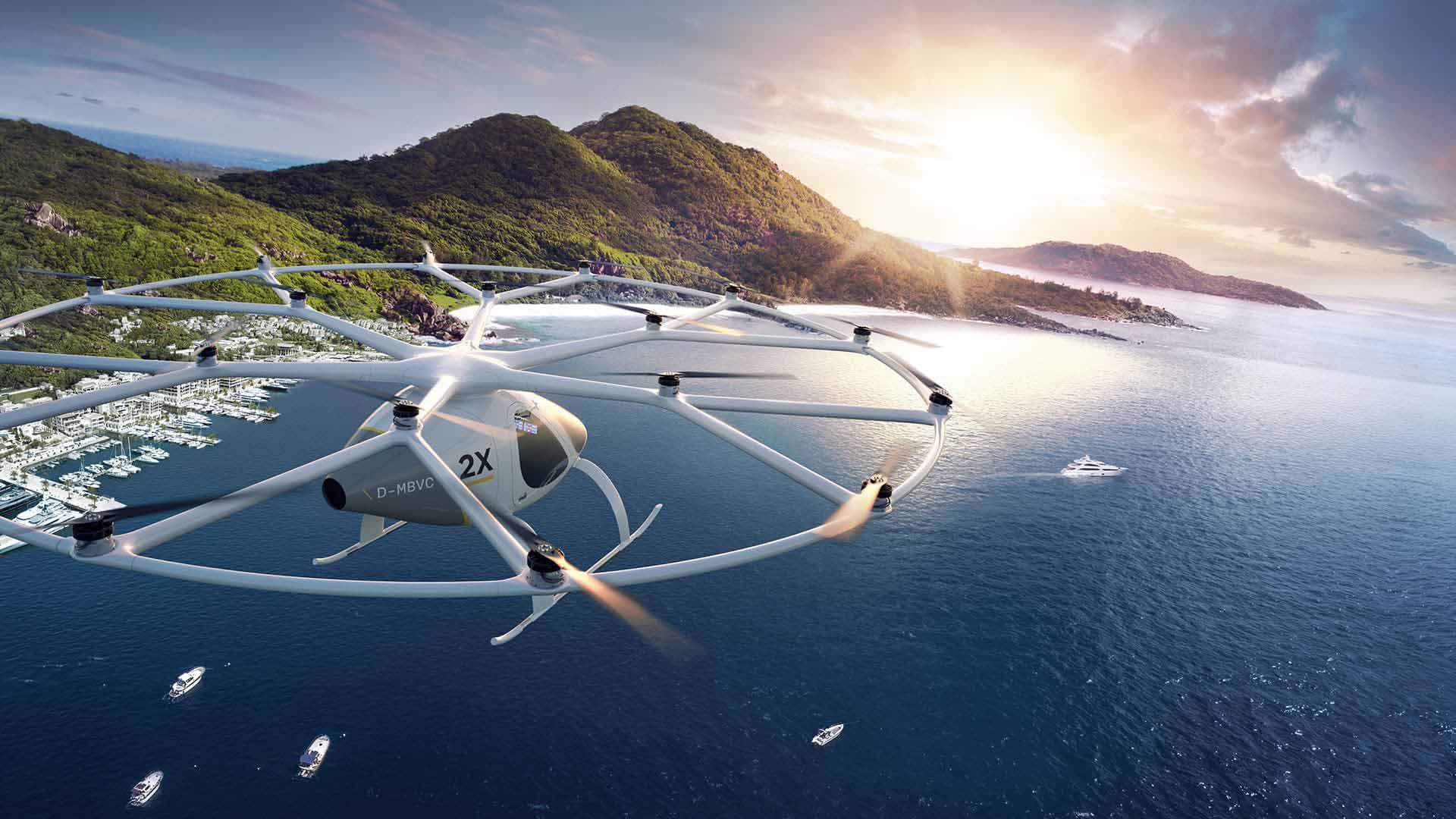Autonomous cars may score most of the attention these days, but a small group of entrepreneurs is betting that autonomous planes will be here faster than most people realize.
Germany-based Volocopter and Lilium—makers, respectively, of a two-passenger, rotor-powered plane and a fixed-wing jet—plan to launch their autonomous machines within the next several years. Both vehicles can take off and land vertically, and both have completed their first flights.
In both cases, innovative engineering may have been the easy part. Now the companies face the hard part: navigation systems that will automatically guide their sky shuttles over traffic and between buildings.
Speaking onstage at TechCrunch Disrupt Berlin, Volocopter cofounder and CIO Alex Zosel predicted a slow rollout phase, beginning with the most congested areas of the city. TechCrunch reported Zosel’s comments:
‘I believe strongly the first commercial application will be a point-to-point solution over a bottleneck somewhere where you have a lot of congestions or you have a river or something else. And then you have some aircrafts—like 10 or 20 aircrafts—flying point to point and shuttling people. . . . This will come really fast.’
Zosel said Volocopter expects to launch a commercial service featuring its helicopter look-alikes by 2020.
A Map in the Sky
Location intelligence has long been used to present real-time information on maps—for transportation companies’ tracking of shipments; utility companies’ monitoring the status of assets on the grid; and, most recently, for guiding the movements of self-driving cars. Like their earthbound cousins, flying taxis will use smart maps populated with real-time data to reach their destinations. Tracking the patterns of airborne cars will have to be done in the mapped environment, leaving a huge opportunity for data analytics companies to contribute to the flying taxi market. (Similar disruptions and opportunities are cropping up in the autonomous vehicle space.)
Yann de Vries, a Lilium investor who spoke alongside Zosel at the TechCrunch event, touted what he sees as the spatial advantage of flying taxis over autonomous cars:
‘Within 15 minutes, with Lilium, you can be within a 70 km radius. So think about all the possibilities these offer,’ he suggested, adding, ‘You can never do this with a car—even with autonomous vehicles—with all the traffic on the roads.’
Given recent advances in location tracking and artificial intelligence, Zosel and de Vries might be right. But they’ll have a perception gap to overcome: a 2017 UBS survey of 8,000 flyers found that 54 percent would not fly in a remote-controlled plane.
Meanwhile, the location intelligence technology optimizing ground-based travel times for autonomous vehicles will undoubtedly play a vital role in the development of new types of air traffic control. As companies like Volocopter and Lilium speed to market, in-the-air location intelligence won’t be a nice-to-have; it’ll be the bedrock of this elevated transportation.
Photo courtesy of Volocopter.











